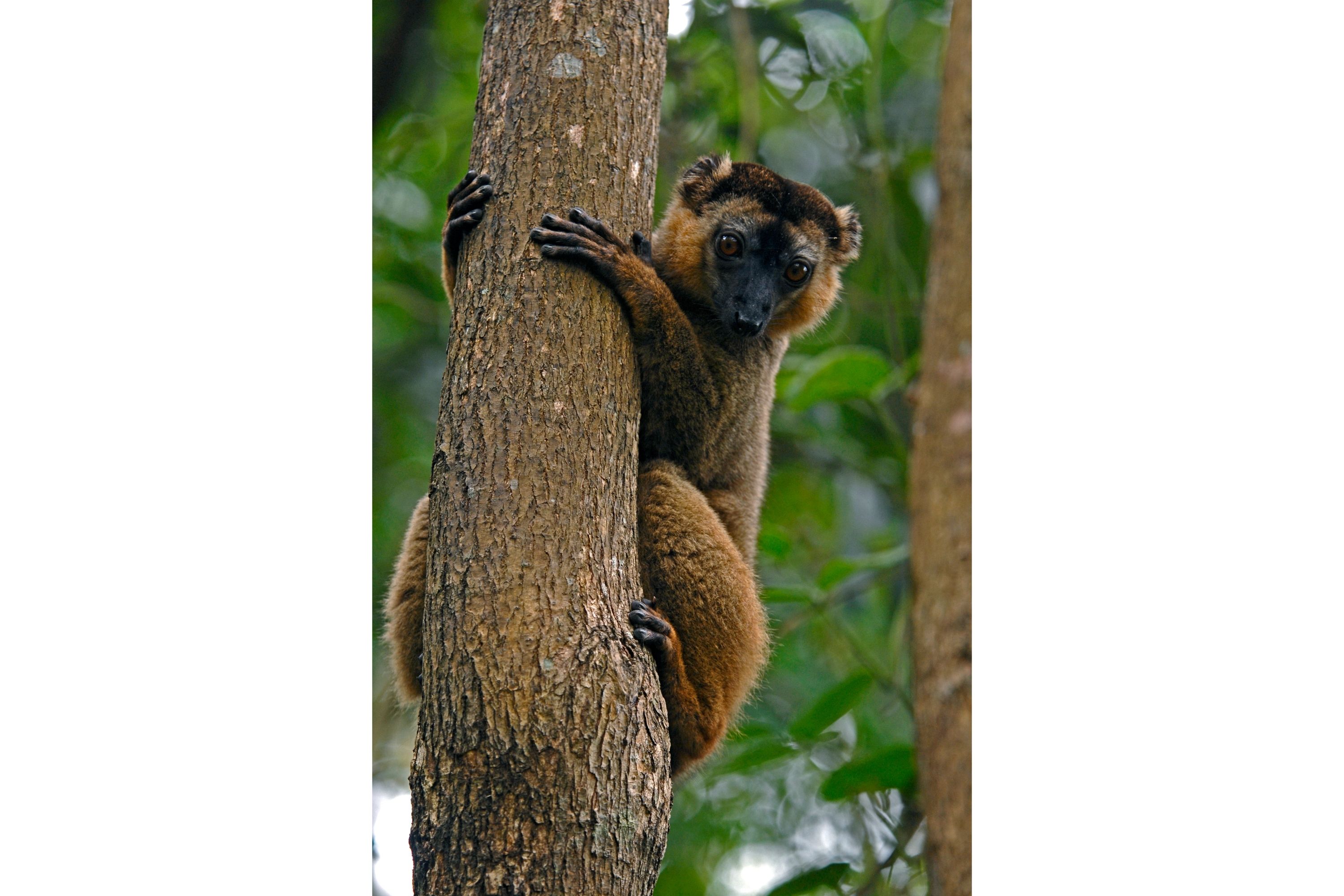Collared brown lemur
(Eulemur collaris)

Description
The collared brown lemur (Eulemur collaris), also known as the red-collared brown lemur or red-collared lemur, is a medium-sized strepsirrhine primate and one of twelve species of brown lemur in the family Lemuridae. It is only found in south-eastern Madagascar. Like most species of lemur, it is arboreal, moving quadrupedally and occasionally leaping from tree to tree. Like other brown lemurs, this species is cathemeral (active during the day and the night), lives in social groups, primarily eats fruit, exhibits sexual dichromatism, and does not demonstrate female dominance. The species is listed as Endangered by the International Union for Conservation of Nature (IUCN) and is threatened primarily by habitat loss. Together with the twelve other true lemurs (genus Eulemur), the collared brown lemur (E. collaris) is a type of lemur belonging to the family Lemuridae. Collectively, lemurs (infraorder Lemuriformes) are classified as strepsirrhine primates. Originally listed as a subspecies of the common brown lemur (E. fulvus), the collared brown lemur was promoted to full species status in 2001 by biological anthropologist Colin Groves. Very little is known about the natural history of this species. It shows great dietary flexibility, feeding on fruits from over 100 plant species. It is also cathemeral (active both day and night throughout the year), a trait seen in some other members of its genus. Research has suggested that metabolic dietary-related needs are the leading factor behind this behavior, although the specific hours of this activity pattern can shift based on lunar luminosity and seasonal changes in the photoperiod (day length). Previous studies had ruled out effects of predators on the expression of this trait, and instead pointed to fruit availability and fiber intake as more important factors. The collared brown lemur tends to live in social groups that are multi-male/multi-female, with groups ranging in size from two to seventeen individuals. Population densities are estimated at 14 individuals/km2, and it appears to be common within its range. Females give birth to one offspring between October and December, and male involvement with the young has been observed. Female dominance, a common behavioral trait in many lemur species but uncommon in most true lemurs, has not been observed in this species.
Taxonomic tree:







